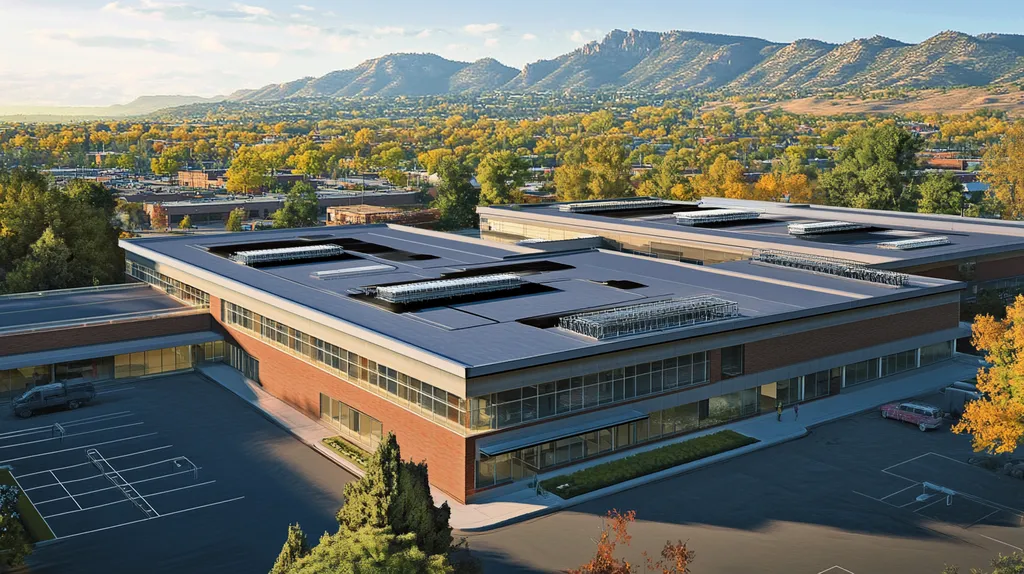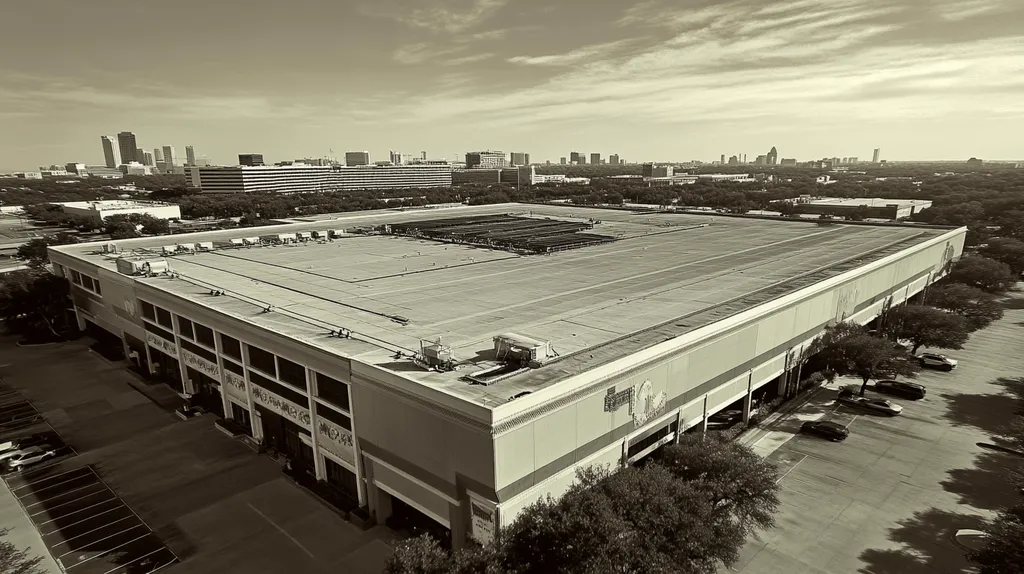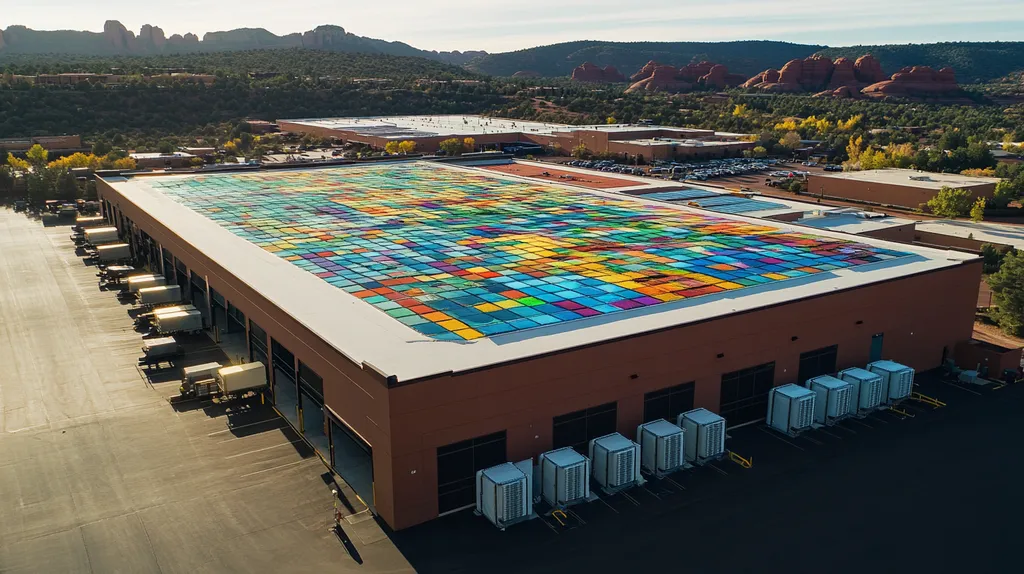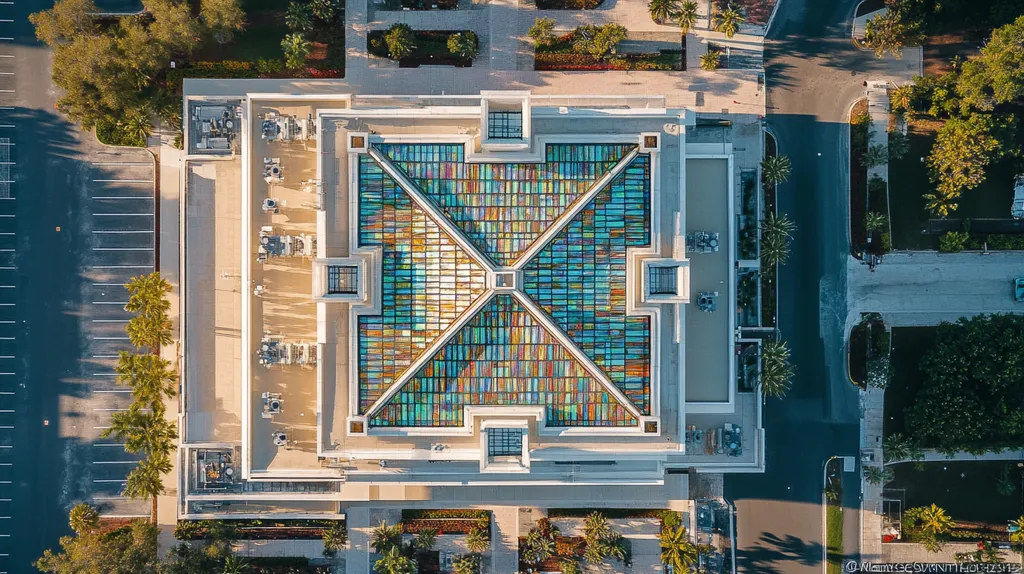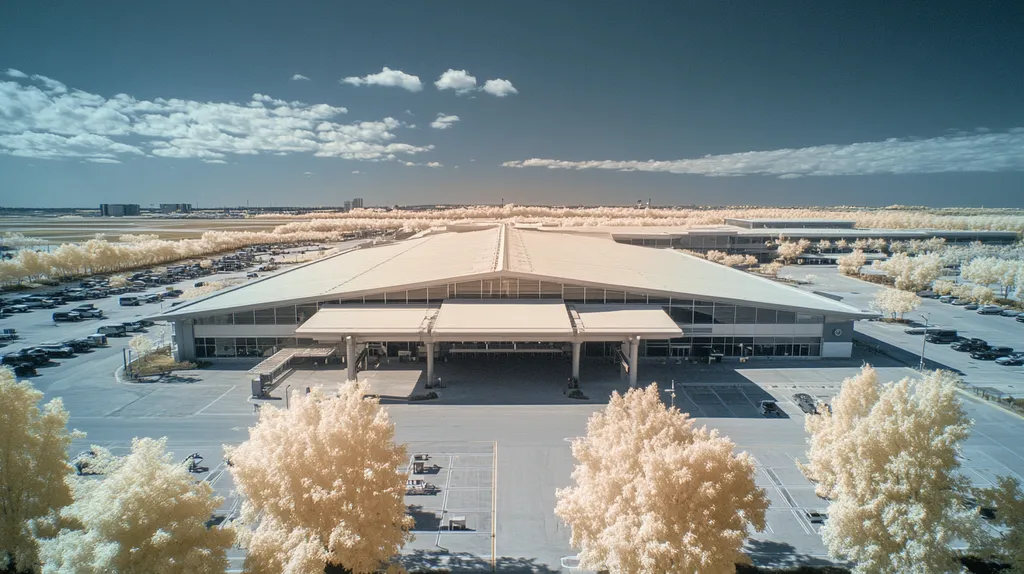Commercial roof coatings represent a critical line of defense for facilities, with premature failures costing US businesses over $2.5 billion annually in repairs, inventory damage, and operational disruptions.
The decision between recoating and full replacement impacts not just immediate budgets, but long-term building performance and protection. Modern coating technologies can extend roof life by 10-15 years when properly specified and installed.
This comprehensive guide examines the crucial factors facility managers must consider – from material selection and installation methods to maintenance strategies and performance metrics – to make informed decisions about their roofing assets.
SECTION 1: FUNDAMENTAL CONCEPTS
Commercial roofing represents one of the most significant investments in building maintenance, with replacement costs often exceeding $250,000 for a typical 20,000-square-foot facility. Beyond the financial implications, a compromised roof can lead to business interruptions, inventory damage, and safety hazards. Understanding the fundamentals of commercial roofing isn’t just about maintenance – it’s about protecting your business investment and ensuring operational continuity.
Signs of Roof Deterioration
The most critical indicators of roof problems often appear inside the building first. Water stains on ceiling tiles, unexplained musty odors, or increasing energy bills can signal roof system failures long before visible exterior damage appears.
Exterior warning signs include bubbling or blistering in the roof membrane, standing water (ponding), and separation at roof seams. These issues typically indicate that the roofing system is losing its protective capabilities and requires immediate attention.
Structural problems manifest through sagging roof decks, rusted metal components, or visible gaps around rooftop equipment. Regular inspection of these areas helps prevent catastrophic failures during severe weather events.
Deterioration around penetrations – such as HVAC units, vents, and pipes – deserves special attention. These areas experience the highest stress and are common points of failure in commercial roofing systems.
Roof Lifespan and Material Types
Modern commercial roofing materials offer diverse performance characteristics. Single-ply membranes like TPO provide excellent UV resistance and energy efficiency, typically lasting 20-25 years with proper maintenance.
Built-up roofing (BUR) systems, though more labor-intensive to install, deliver exceptional durability and puncture resistance. These multi-layer systems can protect facilities for 30+ years when properly maintained.
Modified bitumen roofing combines traditional materials with modern polymer technology. This hybrid approach offers superior tensile strength and flexibility, particularly important in regions with extreme temperature variations.
Coating systems can extend roof life by 10-15 years when applied at the right time. These solutions provide cost-effective alternatives to full replacement while improving energy efficiency and weather resistance.
Building Codes and Compliance
Commercial roofing must meet increasingly stringent building codes that vary by jurisdiction. Wind uplift resistance requirements, for example, can differ dramatically between coastal and inland locations.
Energy codes now mandate specific reflectivity values and insulation levels for commercial roofs. These requirements aim to reduce building energy consumption and minimize urban heat island effects.
Fire resistance ratings represent another crucial compliance area. Different building types and occupancy classifications require specific fire-resistant roofing assemblies to ensure occupant safety.
Drainage requirements have become more stringent, with many jurisdictions now requiring secondary (emergency) drainage systems. Proper sizing and placement of these systems prevent structural overload during heavy rainfall events.
SECTION 2: SYSTEM COMPONENTS
A commercial roof is more than just a protective barrier – it’s an integrated system where each component plays a vital role in building protection. Recent studies show that 90% of premature roof failures stem from poor component selection or improper installation rather than normal aging. Understanding these critical elements helps facility managers make informed decisions about recoating versus replacement while avoiding costly mistakes that can compromise the entire building envelope.
Roofing Materials and Properties
Modern commercial roofing materials offer diverse performance characteristics that must align with specific building needs. Single-ply membranes like TPO and PVC provide excellent UV resistance and energy efficiency, while EPDM delivers superior durability in extreme temperatures.
Material thickness and reinforcement directly impact puncture resistance and longevity. A 60-mil membrane offers significantly better protection than a 45-mil option, particularly in areas with high foot traffic or frequent maintenance activities.
Chemical resistance becomes crucial near kitchen exhausts or industrial vents. Some materials may deteriorate rapidly when exposed to grease, acids, or other industrial chemicals.
Surface reflectivity affects both energy efficiency and material longevity. Light-colored materials can reduce cooling costs by up to 30% compared to dark surfaces, while also experiencing less thermal stress.
Insulation and Ventilation Systems
Proper insulation serves dual roles: energy conservation and moisture control. The R-value needed varies by climate zone, but inadequate insulation can increase energy costs by 20-40% annually.
Ventilation strategies must account for building use and local climate conditions. Manufacturing facilities often require more aggressive ventilation than office buildings due to higher internal moisture loads.
Multiple insulation layers with staggered joints provide better thermal performance than single-layer systems. This approach also reduces thermal bridging that can lead to condensation issues.
The interaction between insulation and deck structure requires careful consideration. Steel decks need vapor barriers to prevent condensation, while concrete decks may require different solutions based on internal humidity levels.
Flashing and Sealant Applications
Flashing details represent the most vulnerable points in any roofing system. These critical transitions must accommodate building movement while maintaining watertight integrity.
Different roof penetrations require specific flashing approaches. HVAC curbs need robust counter-flashing, while pipe penetrations may require flexible boots or pitch pockets.
Sealant selection must consider both material compatibility and movement capability. Using the wrong sealant can lead to adhesion failure or material degradation within months of installation.
Regular inspection of flashing and sealant conditions provides early warning of potential problems. Catching issues early can often mean the difference between simple repairs and major replacement projects.
SECTION 3: IMPLEMENTATION METHODS
Successfully implementing a commercial roof coating or replacement project requires meticulous planning and execution. With today’s roofing systems representing investments often exceeding $500,000 for large facilities, proper implementation directly impacts both immediate costs and long-term building protection. The difference between a 10-year and 20-year roof solution often lies not in materials, but in how effectively the implementation process is managed.
Assessment and Planning Process
Before any work begins, comprehensive moisture scanning and infrared imaging help identify hidden damage beneath the surface. These diagnostics prevent the costly mistake of coating over trapped moisture, which can lead to premature system failure.
Core samples provide critical information about existing roof composition and help determine whether recoating is viable. The number and condition of existing layers, along with local building codes, influence whether removal is necessary.
Climate analysis must factor into material selection and timing. Temperature ranges, rainfall patterns, and UV exposure levels all impact which solutions will perform best for a specific facility.
Load calculations ensure the selected system won’t compromise structural integrity. This becomes especially critical when considering the weight of multiple coating layers or complete roof assemblies.
Roof Removal and Preparation
Roof coatings serve as an additional layer of protection for commercial roofs, shielding them from UV damage and thermal shock. Proper surface preparation, including cleaning and repairs, is essential for coating adhesion and long-term performance. (source: Tycos General Construction)
When removal is necessary, careful coordination of tear-off zones helps minimize exposure to weather. This staging approach ensures that no more roof area is opened than can be protected during a single work shift.
Substrate evaluation after removal identifies any deteriorated decking or insulation that requires replacement. Addressing these underlying issues prevents future problems that could compromise the new system.
Protection of building contents during removal requires careful planning. Temporary covering systems and proper disposal protocols safeguard both property and occupant safety.
Installation of New Roofing Material
Installation begins with establishing proper drainage slopes and addressing any low spots that could lead to ponding. Even minor depressions can collect water and accelerate coating deterioration.
Application techniques vary by material type, with some coatings requiring multiple passes to achieve proper mil thickness. Quality control measures track application rates to ensure uniform coverage.
Detail work around penetrations and transitions demands special attention. These high-stress areas require reinforcement and precise application to maintain watertight integrity.
Final inspections should include adhesion testing and mil thickness measurements to verify specification compliance. Documentation of these quality control measures supports warranty requirements and future maintenance planning.
SECTION 4: MAINTENANCE REQUIREMENTS
Effective maintenance can double or triple the lifespan of commercial roof coatings, yet studies show over 80% of buildings lack comprehensive maintenance programs. A typical roof replacement costs $10-15 per square foot, while proper maintenance averages just $0.10-0.15 per square foot annually. This dramatic cost difference illustrates why proactive maintenance isn’t just about preventing leaks – it’s about protecting a substantial business investment and avoiding preventable capital expenses.
Regular Inspection and Repair
Professional roof inspections should occur at minimum twice yearly – typically in spring after winter stress and fall before severe weather season. These evaluations must cover surface conditions, drainage systems, and all penetration points.
Digital documentation through photos and detailed reports creates invaluable historical records. This data helps track deterioration patterns and optimize repair timing, preventing minor issues from escalating into major failures.
Special attention must focus on roof edges and transitions where most leaks begin. Even minor separation at these points can allow moisture intrusion that compromises the entire system.
Testing adhesion and coating thickness during inspections verifies coating performance. Early detection of thinning or delamination allows for targeted repairs before water penetration occurs.
Preventative Maintenance Strategies
Roof coatings serve as an additional layer of protection for commercial roofs, shielding them from UV damage and thermal shock. Proper surface preparation, including cleaning and repairs, is essential for coating adhesion and long-term performance. (source: Tycos General Construction)
Establishing clear maintenance protocols ensures consistent care across seasons. This includes regular debris removal, drain cleaning, and inspection of all roof-mounted equipment supports.
Coating touch-ups in high-wear areas prevent exposure of base materials. Areas around HVAC units, walkways, and other high-traffic zones need particular attention to maintain protection.
Chemical exposure from exhaust systems or process vents requires specialized maintenance approaches. Regular testing ensures coating integrity hasn’t been compromised by industrial contaminants.
Addressing Structural Issues
Load-bearing capacity evaluation becomes critical as rooftop equipment changes or ages. Added weight from new units or accumulated repairs can stress the original design limits.
Ponding water indicates potential structural deflection requiring immediate assessment. Even small areas of standing water can add significant weight while accelerating coating deterioration.
Seismic activity, building settlement, and thermal movement all impact roof structure. Regular monitoring helps identify subtle changes before they cause coating failure or membrane damage.
Integration with building management systems allows real-time monitoring of structural performance. Sensors can track deflection, moisture levels, and thermal stress to predict potential failures.
SECTION 5: PERFORMANCE METRICS
Making informed decisions about commercial roof coatings requires understanding key performance indicators that directly impact building operations and costs. Modern roofing solutions can reduce energy costs by up to 30% while extending service life by decades – but only when properly evaluated and implemented. By measuring specific metrics around efficiency, water resistance, and longevity, property owners can better assess whether recoating or replacement will deliver the best return on investment.
Energy Efficiency and Cost Savings
The roof surface directly impacts a building’s energy consumption through heat absorption and reflection. Modern coating systems can reduce peak cooling demand by 15-25% in commercial buildings through enhanced solar reflectivity.
Thermal resistance (R-value) plays a crucial role in year-round energy performance. Properly specified coating systems can improve existing R-values without the extensive costs of full replacement.
Performance monitoring through utility tracking helps quantify energy improvements. Many facilities see payback periods of 3-5 years on coating investments through reduced HVAC loads.
Emissivity ratings determine how effectively a roof surface releases absorbed heat. Higher emissivity coatings provide better nighttime cooling and reduced urban heat island effects.
Water Tightness and Leak Detection
Water infiltration testing using electronic leak detection can pinpoint vulnerabilities before visible damage occurs. This precision allows for targeted repairs rather than complete replacement.
Modern coating systems provide seamless protection when properly applied. Even areas with numerous penetrations can achieve watertight performance through specialized detailing techniques.
Adhesion testing verifies coating bond strength and identifies potential failure points. Regular pull tests help predict coating performance and guide maintenance scheduling.
Moisture mapping through infrared scanning tracks subsurface conditions. This technology helps determine whether recoating remains viable or if replacement becomes necessary.
Durability and Longevity Metrics
Roof coatings serve as an additional layer of protection for commercial roofs, shielding them from UV damage and thermal shock. Proper surface preparation, including cleaning and repairs, is essential for coating adhesion and long-term performance. (source: Tycos General Construction)
Impact resistance testing simulates real-world conditions like hail and maintenance traffic. Quality coatings maintain protective properties even after repeated physical stress.
Chemical resistance becomes critical near industrial exhausts or process vents. Specialized coating formulations resist degradation from specific environmental exposures.
Weather testing through accelerated aging predicts long-term performance. These assessments help match coating selection to local climate conditions and exposure patterns.
SECTION 6: OPTIMIZATION STRATEGIES
Optimizing commercial roof projects represents a critical challenge, with industry data showing that poor strategic decisions lead to 35% cost overruns and extended project timelines. Beyond the immediate financial impact, inadequate optimization often results in business disruptions, reduced roof performance, and shortened system lifespan. By focusing on contractor selection, cost management, and operational continuity, facility managers can maximize their roofing investment while minimizing risks and disruptions.
Choosing the Right Roofing Contractor
Contractor selection represents the single most important decision in any roofing project. Look beyond basic licensing and insurance to verify specialized certifications from major manufacturers and industry organizations like NRCA or RCI.
Request detailed documentation of similar projects completed within the past three years. Pay special attention to installations involving your specific roofing system type and building configuration.
Evaluate the contractor’s quality control processes and warranty coverage. Leading contractors maintain dedicated quality assurance teams and offer comprehensive system warranties backed by both manufacturer and installer.
Consider the contractor’s technological capabilities and assessment methods. Modern diagnostic tools like infrared scanning and moisture mapping help identify underlying issues that could compromise new installations.
Budgeting and Cost Management
Develop comprehensive project budgets that account for all potential variables. Include contingency funding of 10-15% for unexpected conditions discovered during roof removal or surface preparation.
Analyze lifecycle costs rather than focusing solely on initial expenses. Higher-quality materials and proper installation methods typically deliver better long-term value despite higher upfront costs.
Consider timing impacts on project costs. Off-season scheduling can reduce labor rates by 15-20%, while bulk material purchases often qualify for significant manufacturer discounts.
Track all project expenses against established benchmarks. Regular financial reviews help identify potential cost overruns early, allowing for timely corrective actions.
Minimizing Disruptions During Replacement
Create detailed project phasing plans that align with facility operations. Breaking large projects into manageable sections reduces impact on building occupants while maintaining weather protection.
Establish clear communication protocols between roofing crews, facility staff, and building occupants. Daily updates on work zones and potential disruptions help maintain productive operations.
Implement strict dust and debris control measures. Temporary barriers, designated material handling routes, and regular cleanup schedules protect interior spaces and sensitive equipment.
Monitor weather conditions actively and maintain appropriate temporary protection. Quick-response protocols for unexpected weather events prevent water damage during partially completed work.
The Bottom Line
With commercial roof failures costing businesses over $2.5 billion annually, the decision between recoating and replacement demands careful analysis of both immediate needs and long-term implications.
Modern coating technologies can extend roof life by 10-15 years when properly implemented, while full replacement provides 20-30 years of protection but requires significantly higher upfront investment.
Success hinges on thorough assessment, proper material selection, and meticulous installation by qualified contractors.
Regular maintenance programs costing just $0.10-0.15 per square foot annually can prevent premature failures and extend system longevity, compared to reactive repairs averaging $3 per square foot.
The most cost-effective solution ultimately depends on existing roof condition, building requirements, and long-term facility plans.
FREQUENTLY ASKED QUESTIONS
Q. What are key signs of a failing commercial roof?
A. Look for water stains on ceilings, musty odors, or higher energy bills. Exterior signs include bubbling membranes or separated seams. Regular inspections are vital to catch these issues early.
Q. What components should I consider in my industrial roof?
A. Key components include roofing materials, insulation, flashing, and sealants. Proper selection and installation of these elements can prevent issues and ensure the roof operates effectively over time.
Q. How do I plan for replacing my commercial roof?
A. Start with thorough assessments to identify existing damage, then analyze your local climate. Planning ahead helps ensure the right materials are chosen and that costs are managed effectively.
Q. Why is roof maintenance important for commercial roofs?
A. Regular maintenance can significantly extend the lifespan of your roof and prevent expensive repairs. By addressing small issues before they escalate, you protect your investment and avoid higher replacement costs.
Q. What performance metrics should I track for commercial roofing?
A. Focus on energy efficiency, water resistance, and durability. Tracking these metrics helps assess your roof’s performance and determine whether recoating or replacement is the better option for cost efficiency.
Q. How can I choose the right contractor for my commercial roofing project?
A. Look for contractors with specialized certifications and a strong portfolio of similar projects. Evaluate their quality control processes and warranty coverage to ensure reliable service and installation.
Q. What additional considerations should I have for my commercial roof?
A. Pay attention to local building codes, energy efficiency requirements, and environmental conditions. All these factors can influence material choice and affect long-term performance and compliance.


